This article is more than 5 years old.
This ABCs blog post was written by Nancy Sullivan, Volunteer in Special Collections & Archives.
K is for…
Kenneth Tyson Raynor Papers
Kenneth Tyson Raynor was born in 1890 in the small eastern NC town of Colerain, NC. He finished high school there and then arrived at Wake Forest College in 1910 at the age of 20. A particularly interesting part of the K.T. Raynor Papers is a scrapbook that documents Raynor’s time as an undergraduate at Wake Forest. Photos of his friends, family and home are included, and the collection shows K.T. as an active participant of his Wake Forest College community. He developed a lifelong love for Wake Forest sports while he was an undergraduate student, and two team photos in his scrapbook show 6 basketball players holding their ball where Champs 1911 is written on the ball. Another photo shows the WFC (Wake Forest College) Baseball Team of 1913, and Raynor wrote beneath the photo “won Southeastern Championship.”
The Raynor collection also includes wonderful photos that show K.T. and his formally attired classmates that are members of the Wake Forest Glee Club and Orchestra. A printed program titled Wake Forest Glee Club and Orchestra dated 1913 – 1914 lists K.T. as the piano player in the orchestra. Although this collection covers Raynor’s long life and his lengthy connection with Wake Forest, this blog post will focus on Raynor’s years as an undergraduate at Wake Forest (1910-1914), and his time spent as a US Navy Seaman in WWI (1918).
Raynor graduated from Wake Forest in 1914 with a Bachelor of Arts Degree. Based on written recommendations from his minister, and his Wake Forest language and history professors, K.T. Raynor was “a young man of attractive personality, good training.” “Mr. Raynor has taken a distinguished stand in all his work as a student at Wake Forest College.” “He has been a very faithful student who has shown his mastery of the subjects studied.” Raynor became a teacher in the Bertie County Schools near his hometown of Colerain, N.C. and then in 1917 he entered UNC at as graduate student.
When the US entered into WWI in April 1917 Raynor’s focus as a graduate student began to be distracted. Still a graduate student a year later in the spring of 1918, K.T. Raynor left his graduate studies and according to two diaries that are part of this collection (entries from Service Record and Soldier’s – Sailor’s Diary), he “enlisted June 22,1918 at Norfolk, Va. in the U.S.N.R.F” (US Naval Reserve Forces) and he “entered service Sept 3, 1918 at U.S. Naval Operating Base, Hampton Roads, Va.” Co. 31 – Unit X.
The summer of 1918 found the world not only deeply entrenched in war, but soldiers and civilians around the world were also suffering from a virus that would trigger the worst pandemic of modern times. Called The Spanish flu, “blue death” and “la grippe,” the impact of the virus was staggering worldwide. According to historians, throughout the summer of 1918 the number of cases of influenza and its severity seemed to plateau, and most of those affected by the virus recovered. But by August (1918) the second wave of the virus was evident. (from Pale Rider – The Spanish Flu of 1918 and How It Changed the World – by Laura Spinney, science journalist)
By September 1918, port cities in the United States were experiencing a spike in numbers of cases of influenza. As the virus escalated it was believed that the virus was arriving on ships from around the world. Wilmington, NC saw its first case of Spanish Flu on September 19, 1918 (according to, Jessica A. Bandel’s book North Carolina and the Great War 1914-1918), and this spread of the flu to his home state would in short time impact Raynor.
In a diary entry dated September 26, 1918 from his Naval Base at Hampton Roads (Norfolk), Virginia, Raynor writes he had passed his exam to be a US Naval Yeoman, and that same day he goes to “sick-bay with Spanish ‘flu’.” Then on September 28 he writes “Late in afternoon came from sick-bay.” Clearly Raynor was one of the lucky ones to survive the pandemic, and by September 29 he writes, “took first long walk over Naval Base with Olive of Apex.”
Raynor’s next recording in his diary is on October 4, where he writes of his brother’s contraction of the Spanish Flu. He states, “received telegram of Assad’s serious illness – but could not get furlough.” The following day Raynor wrote “ rec’d telegram announcing Assad’s death. Got 10 day leave and went home.”
Raynor’s brother was one of over 13,000 Spanish Flu deaths that occurred in North Carolina, (from North Carolina and the Great War 1914-1918), and just as in many families worldwide, the influenza had quickly robbed the Raynor family of their loved one. “The Spanish Flu of 1918-1920 was one of the greatest human disasters of of all time,” Laura Spinney states in her book. She goes on to say, “despite a death toll of 50-100 million people (worldwide), it (Spanish Flu) exists in our memory as an afterthought to World War 1.” The influenza impacted K.T. Raynor’s life in such a way he would never forget.
Following his time at home to mourn his brother’s death, K.T. makes his next diary entry saying “Nov 11 1918 Armistice signed, and “Liberty” given us at Hampton Roads from 1:00 P.M. till 1:00 A.M. Big Celebration in Norfolk, Va.” He was placed on “inactive duty” and released from duty on Dec. 21, 1918. On Dec. 22 -1918 Raynor writes, “arrive at home in Colerain, N.C. Hale – Hearty – Happy ‘Au Revoir’.”
The events of wartime had a lasting impact on Raynor as he moved into the next decade of his life. We find two war time poems penned by K.T.R. (assumed to be Kenneth Tyson Raynor) within the Raynor Papers. The first titled “Musings” was written in 1918, and an excerpt from that poem reads:
And as I sat and mused I thought
Of what this war would mean
To soldier boys and sailors too
Who danger real had seen:
And what ‘twould mean to mothers
Who bravely gave their all
That Freedom should not perish
And Liberty not fall.
The second poem, titled “Musings – 1923″ (Five Years Later) gives an interesting look back on Great War as Raynor writes:
The world has long forgot the price
Her million sons have paid,
The dawn of peace, the end of strife
Is even yet delayed.
The cause for which men fought and died
On land, in air, on sea,
Is seldom heard, the world once more
Is wrapped in jealousy.
In vain were all this sacrifice
In vain that these should die,
If nations still their trust betray,
Their promises belie.
America, come take your stand,
And end distress and pain,
Show to the world your gallant dead
Have not all died in vain.
But let their noble deeds be sung
In verse, in song, in story,
Thy soldier boys and sailors lads
Have covered thee with glory. K.T.R
Following the war Raynor reentered UNC where he remained until 1923. From 1925-26, and 1928 -1930 he was at Duke University where he was a graduate student and Teaching Fellow in Mathematics. Raynor was awarded a Master’s of Arts Degree from Duke and in 1926 K.T. Raynor returned to his beloved Wake Forest College where he became a professor of mathematics. He remained at Wake Forest for the next 35 years. When he retired in 1961, it was believed Raynor taught an estimated 8,000 Wake Forest students. Raynor retained his deep love and commitment to Wake Forest to the end of his long life in 1977.
K is for Horace Kornegay
Horace Robinson Kornegay was born on March 12, 1924 in Asheville, NC. His family soon relocated to Greensboro, NC where Kornegay attended public schools. As a boy, Horace Kornegay loved visiting his relatives in Duplin County, NC where his paternal uncle grew tobacco on the family’s farm. Although raised in the city, Kornegay felt “deeply rooted in the soil of Eastern NC” where his family had owned land since King George II bestowed property to Kornegay’s ancestors in 1748. Horace maintained a deep love for this farm and he always enjoyed carrying out various chores required to raise a successful tobacco crop.
In 1941, Kornegay finished his high school education at what was then known as Greensboro Senior High School. In September of that year, he entered Wake Forest College located in Wake Forest, NC. A year and three months later, Horace enlisted in the US Army to serve in WWII. During his time in the Army, Kornegay participated in two campaigns in the European Theatre of Operations and he was awarded the Combat Infantry Badge, the Purple Heart Medal, and the Bronze Star Medal. He saw active combat in the Vosges Mountains in the French province of Alsace and was wounded by shrapnel on November 12, 1944. Returning to combat three weeks later, Kornegay took part in the Battle of the Bulge as a Military Policeman (MP). While in the Army, Kornegay continued his education by taking courses at Georgia School of Technology from July 1943 to March of 1944. His tenure in the Army was completed January 1, 1946. Kornegay then returned to Wake Forest where he finished his undergraduate degree in 1947. He continued his studies at Wake Forest School of Law, and was awarded his LL.B. degree in May of 1949.
Kornegay entered a general law practice in Greensboro, and he went on to serve as Prosecuting Attorney for Guilford and Davidson Counties from 1955 to 1960. Kornegay entered politics by campaigning and winning a seat in the US House of Representatives. He remained in that post from 1961 to 1969 representing North Carolina’s 6th District. In 1969 Kornegay did not seek re-election. With end of his political career, he began a seventeen year long career with The Tobacco Institute, Inc. in Washington, DC.
The Tobacco Institute was founded in 1958 as a tobacco industry trade group and a lobbyist group that pushed back against increased taxes and regulations on the tobacco industry. Their primary purpose was to defeat legislation that was unfavorable to the tobacco industry and to perpetuate a positive spin on the industry, as it bolstered the industry’s credibility with legislators and the public. The Institute helped to maintain the controversy over “the primary issue” which was the impact tobacco had on the public’s health. The Tobacco Institute was responsible for disseminating positive news about tobacco, especially positive economic news, and it also attacked scientific studies by casting doubt on them.
Kornegay’s cherished experiences on his family’s eastern NC tobacco farm during his formative years made him a natural defender of the tobacco industry. He served as vice president and counsel of The Tobacco Institute (1969-1970), president (1970-1981), and chairman (1982-1986). In 1986, he was known for his resistance to the Surgeon General’s suggestion for a nationwide ban on cigarette advertising. In January 1987, Kornegay retired from The Tobacco Institute, and returned to his home in Greensboro, North Carolina where he resided until his death in 2009, at the age of 84.
The Horace Robinson Kornegay Papers which are a part of Special Collections and Archives contain biographical information on Kornegay; an extensive collection of Kornegay’s correspondence dating from 1979 to 1986 when he was a leading part of The Tobacco Institute; resumes; personnel recommendations; speeches; financial and legal documents; photos, documentation of his travels, as well as political and congressional scrapbooks.
K is for Katie Murray Papers
Margaret Catherine Murray was born February 8, 1897 in Kenansville, Duplin County, North Carolina. The first child of farmer William B. Murray, and homemaker Janie McNeill Boney Murray, Margaret Catherine quickly received the shorter name of Katie which she used throughout her life. When Katie was six years old the family moved to Rose Hill, NC, and at the age of eight, Katie’s mother passed away. Katie’s life long memory of her mother was the image of her mother kneeling at her bedside every night teaching Katie to pray.
In 1908, when Katie was eleven years old she was baptized in Johnson Baptist Church in Rose Hill, NC. This marked the beginning of Katie’s thoughts of those in foreign lands who did not know Christ. Soon thereafter in a school composition Katie wrote “I want to go as a missionary,” but during her years as a teen and while she attended Dell High School in Delway, NC, Katie began to hope “that the Lord did not want her to go to the foreign field for there were other attractions” in her life.
Graduating from high school in 1915, Katie enrolled at Meredith College in Raleigh, NC. There she studied “domestic science” and considered marriage, but “her childhood call to foreign mission service sounded clearly again.” Katie graduated from Meredith College in 1919 with a Bachelor of Arts Degree, returning to her hometown to teach in the high school. She remained at this job for one year, and during that year “a struggle went on in her heart …and she was so miserable that she went to the attic; fell on her knees and told the Lord that she would go…Great peace came for there was assurance that she was in God’s will.”
Katie was greatly relieved to have settled upon her life’s calling as a Southern Baptist Missionary, and began making plans to enter the WMU Training School (Woman’s Missionary Union Training School which later merged with the Southern Baptist Theological Seminary) in Louisville, KY. She remained here for two years, and in the spring of the second year she applied to the Foreign Mission Board in hopes of being sent to China. In August of 1922, Katie Murray left her home in Eastern NC, facing the reality of not seeing her family for the next seven years. She made the long journey to Chengchow, China where she was to be a missionary teacher. Arriving in Chengchow, Katie was struck by the huge Honan Province (population 20,000,000) and the fact that the people of this province had “never (been) touched by the gospel” and she saw this as a challenge. Rising to this challenge, Katie asked to be appointed to field evangelism rather than continuing her role as a teacher.
In 1922 Murray entered the Peking Union Language School (located in what is now Beijing) where she spent the next two years doing intensive Chinese language study (1922-1924). Part of her training was to journey out into the countryside for a language immersion experience, and in her letter dated June 30, 1923 she describes “a ricksha ride of about an hour then a few minutes on the train: a donkey ride of half and hour, then the final climb up the steep hill …”.
In a letter written by Murray dated May 25, 1924, she says, “by August 30 [I] hope to have the two years of required language study (complete), and I will feel like jumping for joy though the task of learning Chinese is a life time job and I shall need and want to study as long as I live.” Katie then left Peking and returned to Chengchow, and “Miss Katie”, as she was affectionately known, lived and worked in the Honan and Anhwei provinces for 26 years (1924 – 1950). Katie endured great cultural and political challenges during her years in Mainland China. In a 1938 letter she wrote, “When Japanese soldiers occupied this city and dead bodies lay here and there, the air was filled with foul odors and sounds of musket and machine gun, (but) within our … Mission Compound there were fragrant flowers and hymns of praise to the Master. … When no oil could be bought our lamps were filled from the tin of a Christian brother … when no wheat could be purchased, an inquirer contributed several sacks of grain, when shells were wrecking houses and killing people, … we were graciously kept from all harm. Our prayers were interspersed with praise and thanksgiving because of the Saviour’s promise to prepare for us a place ‘in the Father’s house of many mansions’.”
Forced to leave the country during WWII, Katie received a letter from the Foreign Mission Board encouraging her to depart from China and to seek safety in Calcutta, India. The letter written by Mr. Robert E. Deddoe dated July 3, 1944 states, “I know full well how reluctantly you turn your face from China — knowing there can be no return until peace comes.” This is a statement to the resolve that Katie Murray had.
At the end of WWII, Murray returned to mainland China, and in 1950, with the recent Communist takeover of China, Murray relocated to Taiwan where she continued to serve as a missionary until her retirement in 1962. After her retirement from her missionary work in Asia, Murray returned to her hometown of Rose Hill, NC,where she remained until her death on Oct. 22, 1982,
As one gets acquainted with the vast collection of materials that comprise the Katie Murray Papers, one finds extensive biographical information and genealogical papers about the Murray family; correspondence with the Southern Baptist Convention Foreign Mission Board; letters to and from family and friends; diaries for 1944 and 1950; loose photographs; photo albums and 35 mm slides; articles and reports; notes; as well as artifacts that include Chinese and Indian clothing. The Katie Murray Papers introduces us to a remarkable woman who embraced the world in ways unknown to most of her time.
Stay tuned for L!
If you are interested in looking through any of the collections in Special Collections & Archives, please email archives@wfu.edu for an appointment.
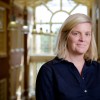

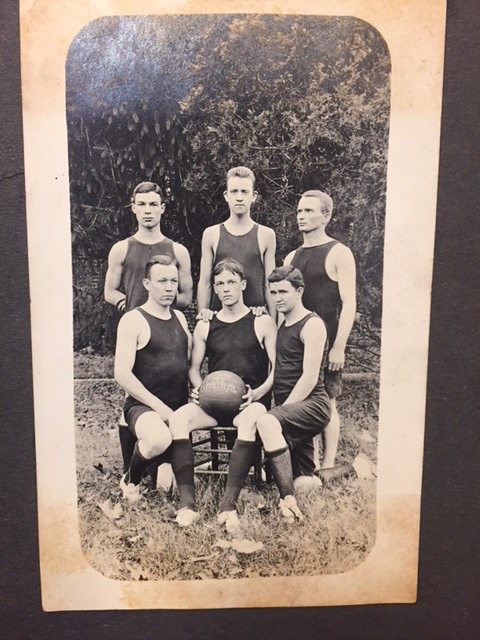
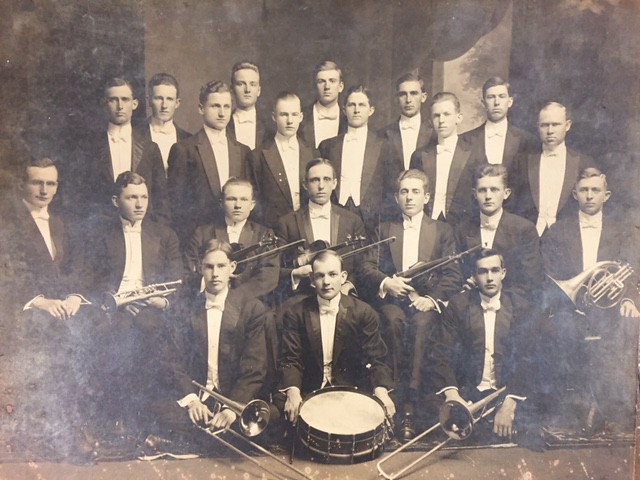
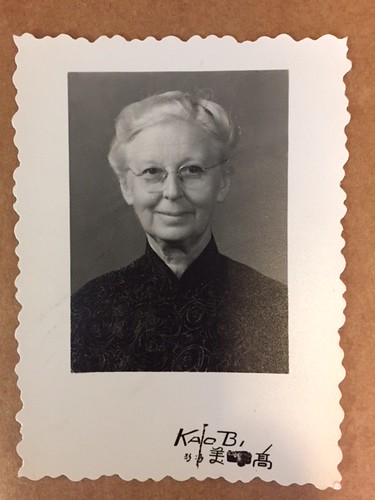
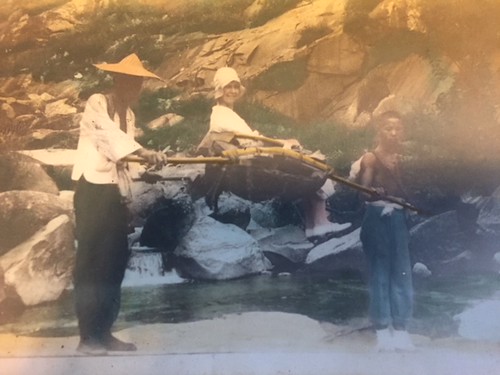
5 Comments on ‘ABCs of Special Collections: K is for…’
Thanks Nancy, for all your hard work–we appreciate it!
I enjoyed reading about these individuals. Thanks Nancy and WFU Archives for this great information.
What a good Friday morning read!
Thank you for these informative and well written descriptions for each individual.
After honoring Memorial Day on Monday, this was perfect reading about three very interesting North Carolina natives! Thank you, Nancy Sullivan!